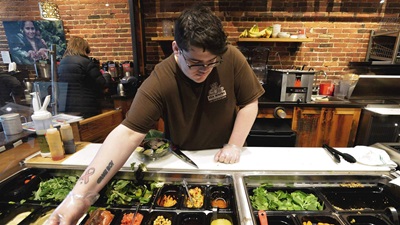37 Scientists on the Cutting Edge of Biomedical Research
Pew’s 2025 scholars and fellows are leading the next generation of discovery.

Scientific innovation is fundamental to the health and well-being of communities across the globe. From developing novel strategies for treating cancer to exploring cutting-edge methods to prevent disease, biomedical researchers are laying the groundwork for lifesaving treatments and strategies for healthy living.
For four decades, The Pew Charitable Trusts has supported early-career biomedical scientists leading this work. This year, 37 researchers join more than 1,000 others in the Pew Scholars Program in the Biomedical Sciences, Pew Latin American Fellows Program in the Biomedical Sciences, and Pew-Stewart Scholars Program for Cancer Research. They will receive multiyear grants to pursue their interests across topics such as neuroscience, cancer, and immunology. Pew announced the recipients Aug. 12, 2025.
Uncovering new horizons in cancer research
Strides in cancer detection and treatment have immense potential to transform patient lives, and several class members are leading the charge. Take glioblastoma, one of the most aggressive brain cancers. One fellow will examine why this disease is so lethal, studying how radiation therapy could inadvertently drive tumor treatment resistance. A scholar will take on blood cancer, developing a platform to untangle what makes mixed phenotype acute leukemia the deadliest form of the disease, and another will explore what differentiates Hodgkin lymphoma and non-Hodgkin lymphoma—cancers that arise from white blood cells. A fourth researcher hopes to uncover how lipoproteins, molecules that transport fats through our circulatory systems, fuel tumor spread and evolution.
Many cancer treatments leverage the body’s disease-detecting T-cells and their ability to differentiate between “good” and “bad” proteins. But these proteins vary widely from person to person, so another scholar hopes to enhance treatments that are broadly effective across patients. Meanwhile, a fellow will examine how the body processes the essential micronutrient selenium, which holds promise as a therapeutic target for pediatric cancer. One scholar will explore how certain RNA-binding proteins could pave the way for improved acute myeloid leukemia treatments, while another will look to the genome to understand how DNA sequences called transposons can drive cancer and other diseases.
Decoding brain development and function
From movement and speech to appetite and emotion, the brain is fundamental to how humans navigate the world, and researchers are unraveling how this organ assembles and evolves. One scholar will study how neurons create the brain’s complex “wiring.” Specialized immune cells called microglia play a key role in brain formation, particularly in the parts of the brain that differ between males and females, so another scholar is investigating how sex differences influence brain development and behavior. Others are examining how the brain adapts over time. One researcher is looking at how rodents learn from their ever-changing surroundings and use a “mental map” to find food, while another plans to harness virtual reality to explore the neural circuits that help zebrafish navigate their environment. Finally, a researcher will dissect the role of our olfactory system in passing what people learn from traumatic experiences on to future generations.
Several scientists are exploring what happens when neurological development and function are impaired. For example, two fellows will examine how the mosquito-borne Zika virus disrupts brain development in utero, with the goal of informing ways to protect the brain from infection. Another will study what happens when neurological function is strained by low oxygen intake, such as what occurs at high altitudes. The brain also directs our bodies to fight disease and heal from injury, so a scholar will research how the brain responds with the right symptoms during sickness, and what happens in cases of noninfectious illness, such as chronic disease. Similarly, a fellow will uncover the mechanisms giving the brain’s immune cells the power to reduce chronic pain during pregnancy. And, using innovative tools, another fellow will develop a map of a fly’s nervous system following leg amputation to see what cells aid in recovery.
Tackling disease prevention and treatment
Slowing the spread of infectious diseases requires understanding of the human immune system—and the mechanisms of the illnesses trying to infect us. Several scholars are investigating immunization methods for curbing disease transmission, such as a scholar who is delving into how emerging viruses pass from one host to another. Bats also often harbor diseases capable of jumping from animals to humans, so another researcher is studying these novel viruses in Madagascar bats to help halt disease spread. And another scientist will examine and refine RNA molecules for more precise and effective therapeutics and vaccines. Meanwhile, a fellow will investigate how iron influences small RNAs in pathogenic bacteria during infection.
Others are discovering new treatment avenues for certain illnesses, such as Lyme disease, which is caused by a tick-spread bacteria called Borrelia. With the help of an artificial intelligence-powered robotic system, this researcher hopes to test new medications for Lyme disease prevention and treatment. Another scientist aims to create “molecular glues” to redirect protein complexes when they are impaired by disease; and still another hopes to develop programmable DNA sequences that can deliver precise genetic treatments to key brain cell types implicated in diseases such as Alzheimer’s and Parkinson’s. Finally, a scholar will examine the impact of infectious disease spread in Latin America during the colonial period to better understand how gene pool variation affects modern-day immune responses to disease.
Answering big developmental biology questions
Understanding how the human body develops and evolves over time is key to encouraging proper healing and preventing developmental defects. Several scientists are studying these fundamental processes and using unique animal models for their research. For example, one scholar hopes to reveal insights into human fertility by examining female sea stars—underwater organisms that produce millions of eggs over the course of their decades-long lives. A fellow is looking to zebrafish for information about congenital disorders in humans. Retinoic acid plays a crucial role in key developmental processes by helping to activate or curb certain genes needed for growth, and the fellow will inspect how this acid fuels the growth of the zebrafish’s striped tail.
Meanwhile, another fellow hopes to better understand the building blocks that make up the human cardiovascular system—work that could reveal new insights into problems with heart development. A scholar seeks to understand how embryos pick up on maternal metabolic cues in the uterus to help guide healthy development. Similarly, another scholar hopes to discover how embryos remain so resilient and adaptable and go on to develop into healthy offspring. These findings could bring new insights into birth defects.
Examining the underpinnings of metabolism and diet
Our bodies convert fuel to energy through the cellular metabolism process. Inside our cells, the mitochondria and endoplasmic reticulum (ER) work together to help power this process, and one scholar will explore this relationship and how the ER adapts during certain metabolic disorders. Another is uncovering insights into a family of proteins vital to sensing nutrients and governing our metabolism. And another researcher is looking to the gut microbiome for clues about treating metabolic disorders—identifying how some “good” bacteria fight symptoms of metabolic disease and how these mechanisms could be applied to microbial therapeutics for humans. Finally, an investigator is looking into how a diet-induced neurological disorder, konzo, leads to paralysis in children, and another is using pioneering techniques to explore how the plants we eat affect our health—with the potential to inform the development of new medicines and to improve the nutritional benefits of crops.
Donna Dang works on The Pew Charitable Trusts’ biomedical programs.











